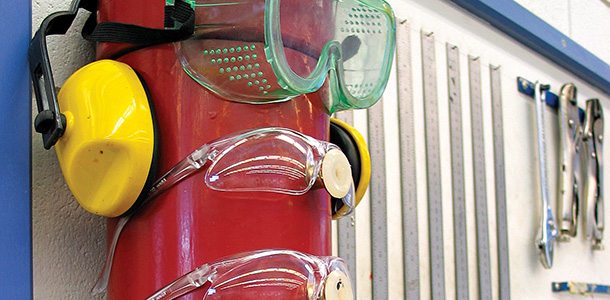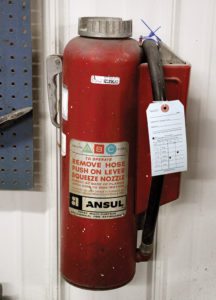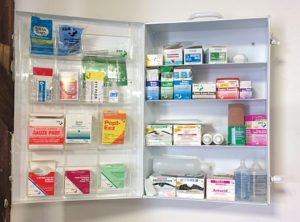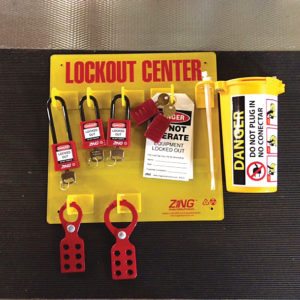Increasing OSHA fines signal need for compliance in marine industry

In November 2015, Congress enacted legislation requiring federal agencies to adjust their civil penalties to account for inflation. As a result, the Occupational Safety and Health Administration (OSHA) increased its penalties based on the Consumer Price Index, which became effective as of August 1. OSHA’s maximum penalties, which were last adjusted in 1990, have increased by 78 percent.
The previous maximum penalty for a serious violation, other-than-serious violation, posting requirements violation or failure to abate was $7,000 per violation; the new penalty will be $12,471. For a willful or repeated violation, the maximum penalty will increase from $70,000 per violation to $124,709 per violation. Violations after Nov. 2, 2015, will be subject to the new penalties.
How marine businesses can prepare
OSHA fines can cripple a marine business, and with the new increase in penalties it is more important than ever to be sure your business is as compliant as possible. Some companies have taken the initiative to hire a company to help improve their compliance, which has been easier than undertaking the process alone.

Jon Kukuk, owner of Nestegg Marine, worked on getting his marina up to OSHA standards on his own for two years. While he made a lot of progress and was lauded by others for his achievements, he ultimately was able to complete the process by working with KPA, a company that is partnering with the Marine Retailers Association of the Americas to provide dealers a range of compliance support.
KPA is well known as a dealer-focused organization, offering services for the auto industry, and they are the preferred provider for the RV Dealers Association.
“It was really a response to what our members were asking for. … If our members have a need, we do our best to go find the solution for that need,” said Matt Gruhn, president of MRAA. “We wanted to be the resource for them to be able to educate them on what the laws are, what the potential penalties are and what they need to do to become compliant. And while MRAA certainly can’t become the expert on that, we can partner with somebody who is.”
Nestegg worked with MRRA and KPA on the pilot program, which includes training, software, webinars and a host of other tools and resources for dealers.
“It was very difficult and strenuous and time consuming doing it on my own without professional help,” Kukuk said. “These guys do it their whole career. They know what to look for.”
The list of items OSHA can and will find is extensive, to the point where it is a full-time job just to know what to look for in your business, and most business owners just don’t have the time.
“The fines kill you. It’s very seldom that you get an OSHA inspection and the inspector doesn’t leave without giving you a $50,000 bill, and I would be surprised if it’s ever less than that,” Kukuk said. “There’s just too many rules and regulations, and that’s why I finally came to the realization that I think we need to rely on experts [and] pay our money. If you think about it, if it’s $250 a month, it’s $3,000 a year. That’s a hell of a lot cheaper than a $50,000 fine.”
Buckeye Sports Center, Inc. chose to hire The Dell Group, a company that specializes in safety compliance, with whom Buckeye has previously worked through the Lake Erie Marine Trades Association. They conduct monthly training with Buckeye’s employees on topics ranging from emergency action and fire prevention plans, personal protective equipment (PPE) and assembling a PPE manual, hazardous communications and more.

“They developed a couple of big binders full of the safety data sheets for us and went over training on cranes and tractors and everything else [as far as] different equipment we had here that might have any safety issues that went along with them,” said Jim Armington, treasurer at Buckeye Sports Center. “It was easy and beneficial. It was great to get all the employees involved in it and have them see what was involved in making a safer working environment.”
Many of these companies provide additional services. The Dell Group made themselves available to Buckeye Sports Center in the event of an OSHA inspection, and when OSHA recently came to Buckeye Sports Center, Buckeye’s representative from The Dell Group was there within 30 minutes of receiving Armington’s call.
“There were a couple other things they were fussing about and he helped mitigate those issues before we got written up on them,” he said.
For 2017, OSHA redefined material safety data sheets (MSDS) and safety data sheets (SDS), which means all MSDS forms need to be replaced with the new form. KPA did a complete chemical inventory of Nestegg Marine’s facility, including items the dealership sells, and entered those into the computer. Kukuk now has a complete online inventory of every chemical at Nestegg, as well as a computerized checklist of all items Nestegg still needs to complete for compliance.
“That’s almost impossible for anybody to do on their own,” he said. “I can go in, I can see all of the issues that they’ve pointed out, and as I correct them I go in and I cancel them or close them.”
Proactive versus reactive costs

The price to hire a company to help with compliance pales in comparison to an OSHA fine, according to those who have chosen to invest.
“For most people, it would be probably anywhere between $6,000 and $10,000 depending on what they needed to get,” said Armington. “I would absolutely recommend that everybody contact a local company that provides [safety and OSHA] training information, because not only is it inevitable that it could happen but there’s so much that you think you have covered, but there’s so many things they look at that had never even occurred to me.”
With KPA’s help, Nestegg Marine is now at 98 percent compliance, which – in terms of OSHA’s standards – is as good as 100 percent, as OSHA will likely find something at any business, no matter how compliant it is.
Hiring a company also shows initiative and a desire to provide a safe environment for employees and customers, which does have some weight with OSHA.
“The company that makes a good effort … will come clean on most OSHA inspections,” said Kukuk. “I can sleep at night now knowing that if OSHA comes in here, yeah I’m going to get fines but I think I can widdle that down and I think I can head them off by showing that I’ve got a very rock solid plan.”




